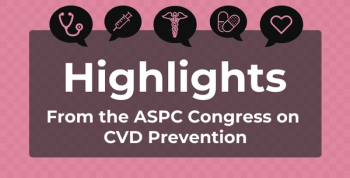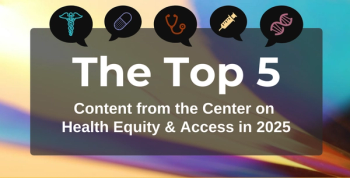
Coordinating Medications for Women With Arrhythmia: Lindsey Valenzuela, PharmD
Lindsey Valenzuela, PharmD, explains how pharmacists can prevent drug interactions and improve coordination for women with arrhythmia and chronic disease.
In an interview with The American Journal of Managed Care® (AJMC®), Valenzuela said pharmacists play a critical role in preventing medication-related harm through robust reconciliation, deprescribing, and
Building on her
This transcript has been lightly edited; captions were auto-generated.
Transcript
How should pharmacists and care teams approach medication management in women with arrhythmia and multiple comorbidities to avoid fragmented care?
This is such an interesting topic for me and very timely at the moment. There appears to be a correlation between the existence of chronic disease—such as
We're really starting to look at
Very interesting topic of study, and what’s also interesting is that when you look at women,
The other thing is these chronic diseases are often treated in silos. The PCP [primary care provider] might manage hypertension, an endocrinologist might manage diabetes, the rheumatologist is dealing with the autoimmune conditions, and so there’s this opportunity for a lack of communication and collaboration, duplication of therapy, or lack of awareness of interactions that are happening with drug therapy. This is particularly concerning for women who have AFib [atrial fibrillation], as well as hypertension and diabetes, and have a higher stroke risk than men.
But pharmacists really are the drug experts, so regardless of the setting, pharmacists participating in care can do really robust medication reconciliation to avoid those risks of hypotension, bradycardia, QT prolongation, and they can help align the medication regimens and deprescribe to make adherence to medications more successful. We can bridge the gap when we’re looking at, for example, in our clinics, we have pharmacist-run clinics, things for just simple things like anticoagulation. We manage 100% of the patients on warfarin. As we’re doing medication reconciliation and visits for warfarin management, we can function as that communicator between the primary care and specialists to coordinate everybody’s understanding of the medication history and adherence and side effects.
This also allows us to address social and cost barriers. One of the biggest reasons we have pharmacists is to make sure that people have safe and effective access to medications, because we can prescribe them all day long, but if we don’t make sure that people can afford them, and start to take them and continue to take them, we will never be successful in the outcomes that we want.
I will endorse that a lot of this can be done at a much bigger scale if you really look at deploying things like
Newsletter
Stay ahead of policy, cost, and value—subscribe to AJMC for expert insights at the intersection of clinical care and health economics.








































